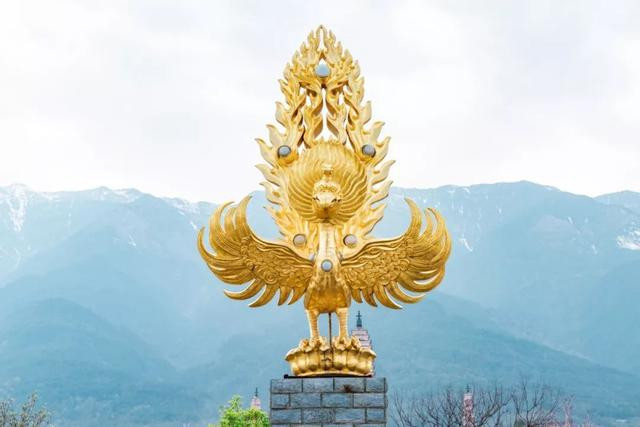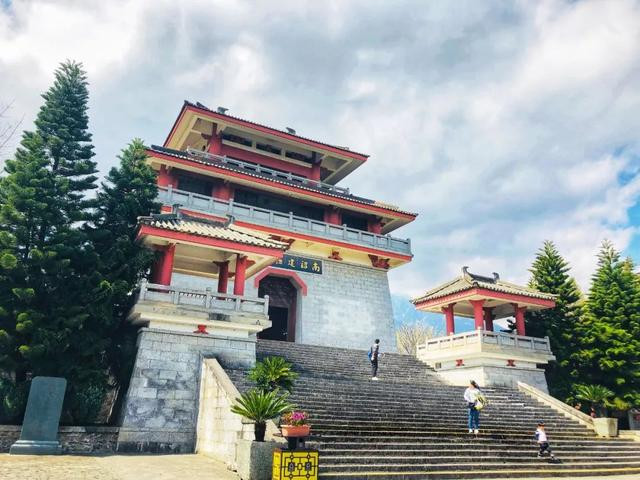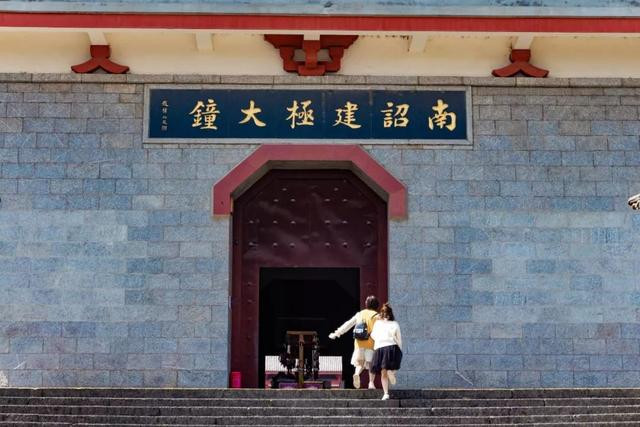A scenic spot in Dali, connecting the two dynasties of Nanzhao State and Dali State, gathering stories of thousands of years
A city has many faces, which is everyone's common understanding!
When I first learned about Dali, I was riding an electric bike on a sightseeing tour around the Erhai Lake. When I came back to Dali, I wanted to know the cultural heritage beyond the mountains and rivers.


When talking about Dali's ancient history, what first came to your mind?
The Battle of Tianbao in Bai Juyi's writings? The Xiaoyao Jianghu of the Eight Departments of the Heavenly Dragon? Duan Yu's Dali Kingdom?
No matter which label they are, they are inseparable from these two dynasties-Nanzhao State and Dali State. These two dynasties were not in China's feudal history. They are the ancient dynasties where the royal tomb has not been found in history so far.
These two ancient dynasties are historical imprints that cannot be erased by no amount of legends and changes in the wind and clouds. These are the historical rivers and lakes and witnesses of Dali's development.

We look at the development of Dali from the cultural relics in a temple in Dali and look for the cultural context of a city.
Dali beyond Cangshan and Erhai is the wind, frost, rain and dew of Chongsheng Temple.
The Three Towers of Chongsheng Temple in Dali are located outside the ancient city of Dali and north of Zhongyue in Diancang Mountain. Locals call it "Tianlong Temple".

During the Song Dynasty, Chongsheng Temple was a royal temple in Dali State. Among the 22 emperors of Dali State, 9 became monks here. Although it is not uncommon for an emperor to become a monk, it is not common either.
Throughout ancient Chinese history, there were only a few emperors who became monks: Emperor Shizong of the Qing Dynasty Shunzhi and Emperor Zhu Yuanzhang of the Ming Dynasty. However, in the history of Dali Kingdom, there were actually nine emperors, all of whom became monks in Chongsheng Temple.

This has something to do with the prevalence of Buddhism in Dali, but why do people choose Chongsheng Temple? I'm afraid the secrets are impossible to discover, but we can visit the existing cultural relics of the three pagodas of Chongsheng Temple. Maybe we can learn about Chongsheng Temple's past and the secrets of being a royal temple!

As an important physical evidence to witness the development of history, cultural relics are like a line that connects the past and present lives of a world, allowing future generations to understand the complete development sequence.
Walking into the Chongsheng Temple Three Pagoda Tourist Area, a solemn and sacred feeling comes to your face, which is very consistent with the characteristics of the "Royal National Temple"!
Although this trip is for the cultural relics in the three pagodas of Chongsheng Temple, the unique scenery is outstanding, so you might as well look for cultural relics while looking at the scenery.

The entire Chongsheng Temple Three Pagoda Cultural Tourism Area is actually a large-scale cultural relics museum. From buildings to unearthed cultural relics, each one is full of a profound sense of history and has experienced thousands of years of wind and frost.
Chongsheng Temple: It was built during the Kaiyuan period of the Tang Dynasty (713 - 741 AD)Chongsheng Temple was built during the Kaiyuan period of the Tang Dynasty. After continuous development and expansion, Dali Kingdom entered its heyday in the Song Dynasty.

The historical material "Nanzhao Yeshi" records that in its heyday Chongsheng Temple had a base of seven miles, three pavilions, seven floors and nine halls, and a total of 891 houses, with 11,400 Buddhas and 4,550 copper. Hu, three pavilions, seventh floors, nine temples, and a hundred buildings."
Chongsheng Temple is the largest ancient temple in Dali's history. Nowadays, when you walk into the three pagodas of Chongsheng Temple, you can still see the intertwined pavilions, pavilions and pavilions, green pines and cypresses, rows of rows and majestic, demonstrating the glory of the ancient "Royal Temple" everywhere.



The entire Chongsheng Temple is integrated with the three pagodas in front, the rippling Erhai Lake with blue waves, and the Cangshan Mountain behind it, embodying the architectural aesthetics of the Orient.
Climbing to the highest point of Chongsheng Temple, you can see the scenery of Canger, the panoramic view of Chongsheng Temple and the three pagodas.

Chihiro Pagoda is the name of the middle of the three towers. It is the tallest of the three towers, with a height of 69.13 meters. It was built during the Baohe period of Nanzhao in the Tang Dynasty and is a typical dense eaves tower of the Tang Dynasty.

The entire tower is spindle shaped with round lines. The interior of the tower body is hollow and divided into 16 floors. It is also a stone-less tower, built directly on the soil foundation. This construction method is modern. Building method.

A large number of cultural relics have been found on the top of the tower and at the bottom of the tower. The most famous one is the "Golden Winged Bird", one of the three cultural relics evaluated by the "National Treasure" Yunnan Province Museum.

The Nanzhao Jianzhu Bell was once one of the five important objects of Chongsheng Temple. It was cast in the twelfth year of the establishment of the temple in the Tang Dynasty and was passed down to the end of the Qing Dynasty. Xu Xiake in the Ming Dynasty once left a record about it in the "Diary of Dian Travel":"The bell is extremely large, and can be more than ten feet long, and as thick as a foot. Its sound can be heard for eighty miles."


Later, it was destroyed due to the war in the late Qing Dynasty. The current Nanzhao Jianda Bell was recast in 1997.

Rain Copper Guanyin was cast during the Nanzhao period of the Tang Dynasty. There has always been a saying about the casting of Rain Copper Guanyin. It is said that half of the Rain Copper Guanyin was cast from copper chips falling from the sky.

Legend has it that at that time, halfway through the casting of the Rain Copper Guanyin statue, the copper was used up. It happened that copper chips fell from the sky, and the copper chips were picked up from the ground to use them to cast the Rain Copper Guanyin. No more and no less were just right.
Later, the Yutong Guanyin was destroyed, and the present Yutong Guanyin is recast based on photos from the late Qing Dynasty.
The Guanyin statue has a kind and amiable face, and a strong and straight body has a male figure. The entire Guanyin statue has the characteristics of Guanyin in Dali in the middle and late Nanzhao period: a male body and a female appearance.

The two small pagodas next to the large pagoda Chihiro Tower were built during the period of Duan Zhengyan (also known as "Duan Heyu", the prototype of the martial arts novel Duan Yu) and Duan Zhengxing in Dali.


The two small towers and the large towers form a three-legged tripod, with a conical shape. The tower body is carved with embossed such as Buddha statues, lotus flowers, and vases, which are extremely exquisite.

The original "Zhang Shengwen Scroll" is a paper painted picture. Experts once called it the "Double Pride of the North and the South" together with the famous "Qingming Festival Shanghe Painting" of the same era. The total length of the painting is 1,635.5 cm and the height of 30.47 cm. There are 774 characters and countless animals.
The shape is vivid and vivid, the brushwork lines are smooth, the scenes are lifelike and precise, and the characters are lifelike. The picture scroll mainly reflects the Buddhist content of Dali.

Photo source: Internet (excerpt from "Zhang Shengwen's Picture Scroll")
This picture is more than 800 years old, but it cannot escape the fate of being displaced.
Because the catastrophe was lost from the royal palace of the Dali State, he took it back to the palace when Qianlong of the Qing Dynasty went to Jiangnan. He inscribed and stamped the paintings and hid them in the Forbidden City.
Later, it was lost to China Taiwan, where it is now on display at the Palace Museum in Taipei, China, as a treasure of the town.
In the Third Pagoda Cultural Tourism Area of Chongsheng Temple, a copy of "Zhang Shengwen Scroll" is displayed on the second floor of Yutong Guanyin Hall, which is extremely precious.
In the Daxiong Hall of Chongsheng Temple, the "Zhang Shengwen Scroll" carved with Dali Jianchuan handicraft art-wood carving is displayed. The wood carving scroll is 117 meters long and 1.8 meters high, accurately restoring the details of the original painting.

The four words "Yongzhen Mountains and Rivers" are located in front of the three pagodas-Chihiro Tower. They are said to be written by Mu Shijie, grandson of Duke Qian of the Ming Dynasty.
The Duke of Guizhou named Mu Ying was the adopted son of Zhu Yuanzhang, the founding father of the Ming Dynasty and the founder of the Ming Dynasty. His family inherited the position of Duke of Guizhou for generations and led troops to guard Yunnan.

In the entire Chongsheng Temple Three Pagoda Cultural Tourism Area, whether in terms of buildings or cultural relics, they are witnesses to the development of Nanzhao Kingdom and Dali Kingdom.
Although there is no detailed record of its development in ancient China's feudal history of Nanzhao and Dali, it has long been inseparable from mainstream culture.
From the cultural relics of the three pagodas of Chongsheng Temple, we can clarify its development context and the countless connections related to it.
[Editor] Reading Yunnan Yijing
[Remarks] Please indicate the source for reprinting this article. The pictures are prohibited for commercial use without permission. Some pictures come from the Internet. If there is any infringement, please contact to delete them.
Previous Article:A 51-day self-driving autumn tour of Yunguichuan in 2020 (7)--Jianchuan
Next Article:Free travel and in-depth tour will take you around the real ancient city of Dali (1)
